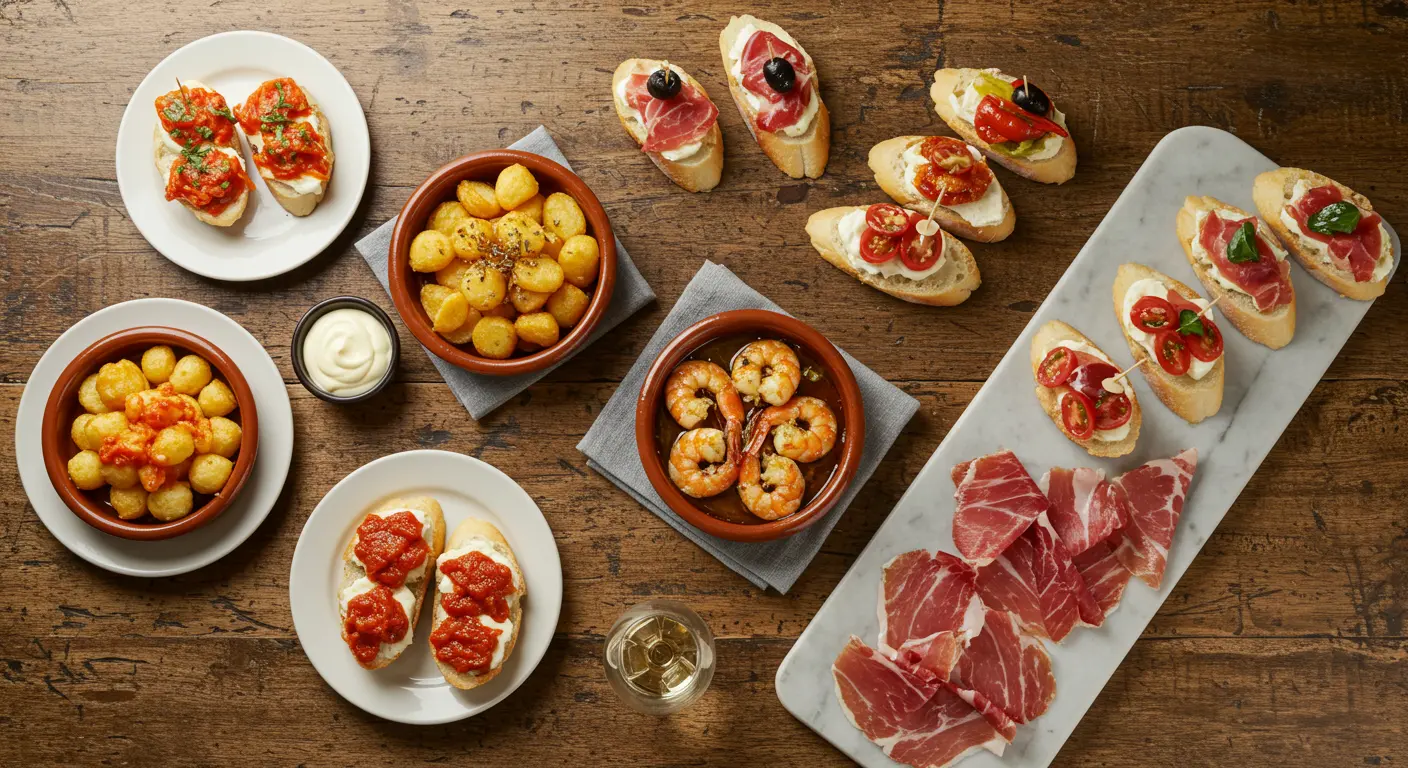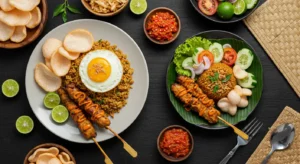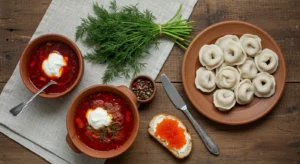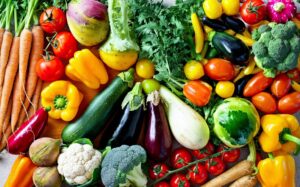Table of Contents
A Beginner’s Guide to the Irresistible World of Spanish Food
You’ve seen the pictures. A bustling, sun-drenched plaza. Crowded tables laden with small, exquisite plates. A giant pan of vibrant yellow rice, studded with seafood, arriving with a theatrical sizzle. Spanish food has a way of capturing the imagination long before you ever taste it.
But here’s the thing—what we think we know about Spain food is often just the tip of the iceberg lettuce in a classic ensaladilla. Spanish cuisine is a deeply regional, historically rich tapestry that tells the story of the country itself. It’s not a monolith. It’s a conversation.
If you’re planning a trip, or just dreaming of one from your kitchen, this guide is for you. We’re going to move beyond the clichés and dive into the heart and soul of what makes eating in Spain one of the greatest pleasures on earth.
The Heartbeat of Spanish Culture: It’s More Than Fuel
In Spain, food is the central pillar of social life. It’s not something you hurriedly consume between meetings. It’s an event, a ritual, a reason to connect with friends and family for hours on end.
This is best exemplified by the schedule. Lunch (la comida), the main meal of the day, typically happens between 2 PM and 4 PM. Dinner (la cena) rarely starts before 9 PM, often stretching past midnight. This isn’t just a quirky custom; it’s a reflection of a culture that prioritizes leisure and community over the clock. Businesses close, streets quiet down, and people gather to eat, talk, and simply be together.
Understanding this is the first step to understanding Spanish food. It’s not just about what’s on the plate, but how, when, and with whom it’s enjoyed.
Beyond the Bar: The True Story of Tapas
Let’s clear this up right away. While tapas are iconic, the tradition varies wildly across Spain.
The legend goes that the word tapa (meaning “lid”) originated when King Alfonso X of Castile decreed that sherry must be served with a small bite of food on top of the glass to “cover” it and prevent flies, helping to offset the alcohol’s effects. Whether fact or folklore, the custom stuck.
In the south, in cities like Granada and Seville, you’ll often get a free tapa with every drink you order. It might be a simple bowl of olives, a small plate of patatas bravas, or a slice of ham on bread. The quality and complexity might increase with each subsequent round.
In northern cities like Madrid or San Sebastian, tapas (pintxos in the Basque Country) are more commonly ordered and paid for individually. You’ll wander from bar to bar, each specializing in one or two exquisite creations. In San Sebastian, the pintxos are often elaborate culinary works of art, skewered with a toothpick to a piece of bread.
The key to tapas is movement. It’s a culinary crawl, a way to sample a variety of flavors and atmospheres in a single evening.
A Tour of Spain’s Plate: The Can’t-Miss Dishes (Region by Region)
This is where the magic happens. Spain’s diverse geography and history have created distinct culinary regions. To say you’ve experienced Spain food is to taste a bit from each.
The National Dish: Paella Valenciana
First, a crucial public service announcement: authentic paella is from Valencia and originally contained rabbit, chicken, snails, and green beans. The seafood version, while delicious, is a coastal adaptation. The best paella is cooked over an open fire, has a crispy bottom layer called the socarrat, and is meant to be shared directly from the pan. If a restaurant offers “paella for one” on a tourist strip, run. For a deep dive into its history, the Michelin Guide’s article on paella is an authoritative resource.
The Soul of the South: Gazpacho and Salmorejo
When the Andalusian sun beats down, there’s nothing more refreshing than a chilled tomato soup. Gazpacho is the lighter, more well-known version, a blend of tomato, cucumber, pepper, garlic, olive oil, and vinegar. Salmorejo, from Córdoba, is its richer, thicker, creamier cousin, often topped with diced serrano ham and hard-boiled egg. They are both miracles of simplicity.
From the Mountains: Jamón Ibérico
This isn’t just ham. This is a national treasure. Jamón Ibérico comes from the Black Iberian pig, often free-range and acorn-fed (bellota), which gives the fat a nutty, melting quality that is utterly sublime. Seeing legs of ham hanging from ceilings in bars and restaurants is a quintessential Spanish sight. The careful carving of it is a respected profession.
The North’s Treasure: Pintxos in San Sebastian
While tapas are everywhere, the Basque Country elevates them to an art form. Pintxos are small bites, often held together by a toothpick, that are as beautiful as they are delicious. Think of a small piece of bread topped with a seared chunk of foie gras, a pepper stuffed with creamy cod brandade, or a skewer of grilled prawns. You grab what you want from the bar, and they count the toothpicks at the end to bill you.
The Spice of Life: Paprika and Saffron
You can’t talk about Spanish flavors without these two powerhouses. Pimentón de La Vera, smoked paprika, is the ingredient that gives chorizo its deep red color and smoky flavor and is essential in many stews. Saffron, the world’s most expensive spice, is the essential heart of a proper paella, providing its iconic golden hue and distinct aroma.
How to Eat Like a Local: A Beginner’s Cheat Sheet
Feeling overwhelmed? Don’t be. Here’s a simple playbook for your first foray into Spain food.
- Embrace the Menu del Día: At lunchtime, most restaurants offer a fixed-price menú del día (menu of the day). It usually includes a starter, main course, dessert or coffee, and a drink for an astonishingly good price (often €10-€15). This is the absolute best way to eat a high-quality, authentic meal.
- Order What’s Regional: In Galicia, eat seafood. In Madrid, try cocido madrileño (a hearty chickpea stew). In Asturias, drink cider. You’ll get the best of what’s fresh and local.
- Timing is Everything: Want to eat with the locals? Have a light breakfast around 8 AM, a big lunch around 2-3 PM, a mid-afternoon snack (merienda) around 5-6 PM, and dinner at 9:30 PM or later.
- Just Ask for “La Cuenta”: Unlike in some countries, the waiter won’t bring the bill until you ask for it, as it’s considered rude to rush you. When you’re ready, simply wave politely and say, “La cuenta, por favor.”
Frequently Asked Questions (FAQs)
Q: Is it rude to not finish the food on my plate?
A: Not at all. Spaniards are generous hosts, but they are understanding. It’s far better to leave food than to be uncomfortably full. A simple “Estaba delicioso, pero estoy lleno” (It was delicious, but I’m full) is perfectly polite.
Q: What’s the tipping culture like in Spain?
A: Tipping is not expected or obligatory as it is in the U.S. The standard is to simply round up the bill or leave small change. For exceptional service at a nice restaurant, leaving 5-10% is a very generous gesture and will be greatly appreciated.
Q: I’m a vegetarian. Will I find things to eat?
A: It can be challenging, but it’s getting much easier, especially in larger cities. While traditional cuisine is meat and seafood-heavy, look for dishes like tortilla española (without ham), pimientos de padrón, patatas bravas, espinacas con garbanzos (spinach with chickpeas), and a wide variety of incredible cheeses. Don’t be afraid to ask “¿Tiene algo vegetariano?” (Do you have anything vegetarian?).
Q: What is the most important meal of the day in Spain?
A: Without a doubt, it’s lunch (la comida). This is the large, main meal where families and friends gather for a multi-course affair. Dinner is typically much lighter.
Q: What time do people typically eat dinner?
A: Dinner is a late-night affair. It’s completely normal for restaurants to be empty at 7:30 PM and packed at 10:00 PM. Most Spaniards won’t even think about dinner before 9:00 PM.
Your Spanish Feast Awaits
The world of Spain food is a journey of discovery. It’s about the salty crunch of a perfectly fried padron pepper, the communal joy of sharing a vast pan of paella, the ritual of the tapeo, and the slow, satisfying pace of a three-hour lunch.
So, whether you’re booking a flight to Barcelona or seeking out an authentic Spanish mercado in your hometown, go in with an adventurous spirit. Say “sí” to the things you don’t recognize. Soak up the atmosphere. And remember, the best meal in Spain isn’t just about the food on the table—it’s about the people sitting around it.




